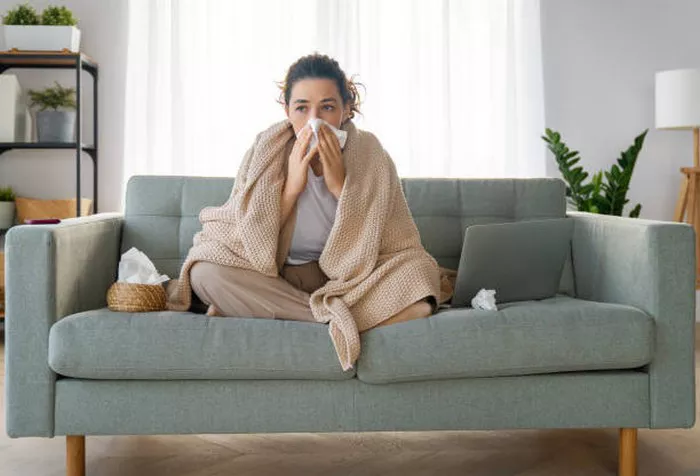Dust mites are tiny creatures that live in household dust and can trigger allergic reactions in some people. If you’re allergic to dust mites, it’s important to take steps to reduce your exposure and manage your symptoms. In this comprehensive guide, we’ll explore tips and treatment options for coping with dust mite allergies.
What Are Dust Mites?
Dust mites are microscopic creatures that are found in household dust. They thrive in warm, humid environments and feed on dead skin cells shed by humans and pets. Dust mites are a common cause of indoor allergies and can trigger symptoms such as sneezing, runny nose, and itchy eyes.
Symptoms of Dust Mite Allergies
Symptoms of dust mite allergies can vary from person to person, but may include:
- Sneezing
- Runny nose
- Stuffy nose
- Itchy, red, or watery eyes
- Itchy nose or throat
- Postnasal drip
- Cough
- Facial pressure and pain
- Difficulty sleeping due to nasal congestion or other symptoms
Tips for Reducing Exposure to Dust Mites
Reducing your exposure to dust mites is an important part of managing your allergy symptoms. Here are some tips for reducing your exposure:
Encase your bedding: Use allergen-proof covers on your pillows, mattress, and box spring to reduce your exposure to dust mites.
Wash bedding in hot water: Wash your bedding in hot water (at least 130°F) once a week to kill dust mites and remove allergens.
Vacuum regularly: Use a vacuum with a HEPA filter to remove dust mites and allergens from carpets, upholstery, and other surfaces.
Control humidity: Use a dehumidifier to keep indoor humidity below 50%, as dust mites thrive in humid environments.
Remove clutter: Reduce the amount of clutter in your home to minimize the amount of dust that accumulates.
Treatment Options for Dust Mite Allergies
If your dust mite allergy symptoms are interfering with your daily life, there are several treatment options that can help. Here are some of the most common treatment options:
Antihistamines: Antihistamines are medications that can help relieve symptoms such as sneezing, runny nose, and itchy eyes.
Nasal corticosteroids: Nasal corticosteroids are medications that can help reduce inflammation in the nasal passages and relieve symptoms such as congestion and runny nose.
Immunotherapy: Immunotherapy, also known as allergy shots, can help desensitize your immune system to dust mites over time.
Decongestants: Decongestants can help relieve nasal congestion, but should be used with caution as they can have side effects such as increased blood pressure.
Allergen immunotherapy tablets: Allergen immunotherapy tablets are a newer treatment option that can be taken orally to help desensitize your immune system to dust mites.
When to See a Doctor
If your dust mite allergy symptoms are severe or interfering with your daily life, it’s important to see a doctor. Your doctor can help diagnose your allergy and recommend appropriate treatment options. In some cases, your doctor may refer you to an allergist for further testing and treatment.
Some Things You Can Do If You’re Allergic To Dust Mites
Keep your home clean: Regular cleaning can help reduce dust mite allergens in your home. Vacuum carpets and upholstered furniture regularly, and wash bedding and curtains in hot water once a week.
Use allergen-proof covers: Allergen-proof covers can be used to cover mattresses, pillows, and box springs to help reduce exposure to dust mite allergens.
Reduce humidity: Dust mites thrive in humid environments, so reducing humidity in your home can help reduce their population. Use a dehumidifier or air conditioner to keep humidity levels below 50%.
Use HEPA filters: High-efficiency particulate air (HEPA) filters can help trap dust mite allergens and other airborne particles. Use HEPA filters in your vacuum cleaner and air purifier.
Consider medication: Over-the-counter or prescription medications such as antihistamines, decongestants, and nasal corticosteroids can help relieve allergy symptoms. Consult with your doctor to determine the best treatment plan for you.
Foods To Avoid If You Have Dust Mite Allergies
While there are no specific foods that can cause or cure dust mite allergies, some people with allergies may experience cross-reactivity with certain foods. These foods include shellfish, nuts, and seeds. It’s important to consult with a doctor or allergist to determine if you have any food allergies or sensitivities that may be exacerbating your dust mite allergy symptoms.
Conclusion
Dust mite allergies can be challenging to manage, but there are steps you can take to reduce your exposure and manage your symptoms. By following the tips outlined in this article and working with your doctor to find the right treatment options, you can help control your dust mite allergy and improve your quality of life.
Related Topics:


